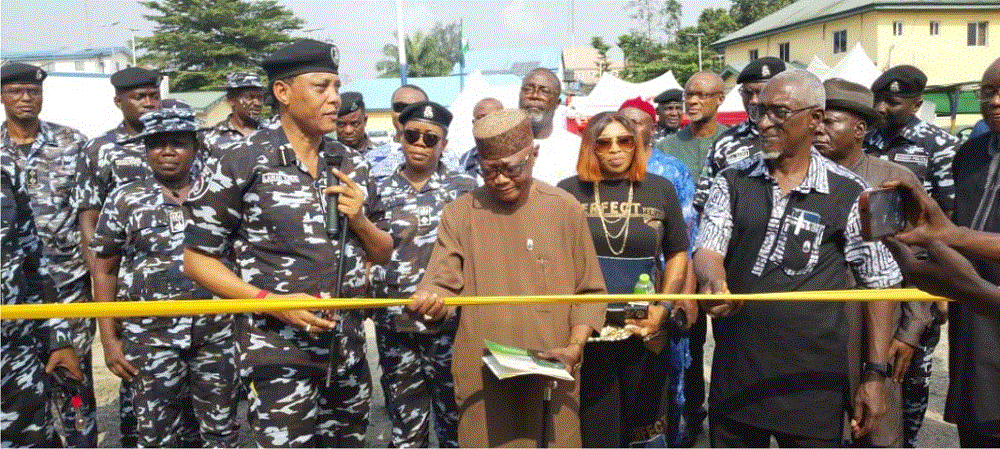2018 Budget Report: How Rivers State Maintains Lead
– Lagos Dropped From 2nd to 4th Place on The Fiscal Sustainability Index
Rivers state sits on top of the Fiscal Sustainability Index due to its robust revenue profile and manageable recurrent expenditure obligation. The state’s actual revenue of N209.12 billion in 2017, when juxtaposed with its recurrent expenditure obligation of N141 billion in the same year, indicates Rivers is fiscally stable, and able to cover its recurrent expenditure without borrowing.
Given that in 2018, recurrent expenditure is expected to fall to approximately N132 billion, at face value, the state should have no problems paying its way, going forward. Rivers is also one of Nigeria’s most vibrant, in terms of crude oil deposits; this position comes with a significant share of annual Federal Account Allocation Committee (FAAC) allocations.
Our analysis shows that increase in statutory allocations, mainly guided by oil revenues, had a significant impact on the Index. Rivers, Bayelsa, Delta, Akwa Ibom, Edo and Ondo are among the top ten states in our Index. We also see a commendable appearance by the states with low expenditure outlay and sizeable debt burden such as Anambra, Enugu and Katsina. We also noticed that Abia has tightened its recurrent projection, providing it the opportunity to leap on our sustainability rankings.
Lagos dropped from 2nd to 4th place on the Fiscal Sustainability Index notwithstanding the state’s fiscal advantage. Lagos’ Internally Generated Revenue (IGR), when compared with other states, is relatively high. Her IGR as at the end of 2016 was N287 billion; higher than its 2015 level of N268.2 billion. In 2017, the state planned a recurrent expenditure spending of N305 billion or N25 billion monthly.
With its IGR not expected to grow significantly above N300 billion, and its share of FAAC revenue in the first six months of 2017 at N6.6 billion, Lagos is expected to meet its recurrent expenditure obligations. However, Lagos’ unusually high overhead costs and debts continue to weigh its revenue down.
Our research also showed that Osun state is not out of the woods yet as it still ranks 35 out of the 36 states. We are extremely concerned about the poor fiscal management thinking in Cross River with its bogus budget plan of N1.3 trillion, which severely weighed it down on the Index. The state’s inability to meet its recurrent expenditure obligations, its heavy debt profile and inefficient IGR collection weighed seriously on the state.
While the fiscal structure of states has improved on the back of increasing oil revenue, state governments need to tremendously embrace a high level of transparency and accountability, develop workable economic plans, take haircuts – especially on overheads – expand their IGR base and cut down on debt accumulation.
Internally Generated Revenue
State governments and state-controlled entities (local governments) collect and control ALL revenues generated from personal income tax, property tax, road tax, radio and television tax, among others. In 2017, Lagos state accounted for approximately 35.86 percent of total IGR collected by states, down from 2016 level of 37 percent. Lagos, Ogun, Delta and Rivers lead in terms of IGR uptake per capita. Collection efficiency in Kano is abysmal but improving; despite its vast market size, it could only collect N3,139 per head in 2017 up from N2,367 per head in 2016. Kwara state’s per capita IGR uptake at N5,969 per head shows the state is aggressively mobilising funds.
On average, IGR uptake is N3,818 per head across the states; it is only in 10 states that collection efficiency is higher than the statewide average. The least performing states include Bauchi, Katsina, Borno, Kebbi and Yobe states. It is crucial for state governments to design innovative policies around tax collection, especially collection efficiency.
Value Added Tax
Due to its market size, Lagos state tops in terms of VAT revenue in the first six months of 2018. Lagos VAT revenue receipts between January and June 2018 averaged N8.033 billion monthly up from the average of N6.38 billion in the first six months of 2017, significantly higher than Kano’s.
Nasarawa, Bayelsa, Gombe and Ebonyi trail the pack. It is evident in our analysis that many states lack the formal structures for the payment VAT. Twenty-nine out of 36 states got less than N1 billion monthly, despite huge differential in population.
Debt Stock
Total debt stock of Nigerian states has increased significantly from the 2012 level of N1.79 trillion to N4.49 trillion in 2017. With increased inability to meet recurrent expenditure obligations and increased pressure, most states resort to more debt uptake. Total debt profile of the states rose from the 2014 level of N2.13 trillion to 2017 level of N4.49 trillion.
The total debt of Lagos state–the most indebted state in Nigeria–rose from the 2014 level of N456.8 billion to N813.04 billion in 2017, accounting for 18.08 percent of the total debt stock of state governments.
Index A
Index A looks at the ability of states to meet their recurrent expenditure obligation with state-owned revenue like value added tax, 13 percent derivation and IGR. In terms of weight, Index A was assigned 35 percent weight as it was critical that personnel and overheads (recurrent expenditure) of government are covered with tax revenue and other associated revenue peculiar to the state like 13 percent derivation paid to oil producing states without resorting to borrowing.
While growing states IGR by widening the personal income tax net is ideally the path for most states, some may use indirect tax through increased Value Added Tax undertaking due to socio-religious norms, political pressure and from the policy front adopted in 1991. States with natural resources like oil and solid minerals should explore those resources given the socioeconomic status of most Nigerians at this time as it gets increasingly difficult to tax already heavily taxed people.
Alternatively, some states may keep operating costs (like personnel and overhead costs) low to free up more spending for social and economic infrastructure. States like Rivers, Lagos, Delta, Bayelsa and Edo sit on top of Index A.
Index B
Equally important is the states’ ability to cover all recurrent expenditure obligations without resorting to borrowing. Index B which was assigned a weight substance of 50 percent looks at states’ ability to meet its recurrent expenditure obligation using all revenue sources. Interestingly, about 16 states could cover the recurrent expenditure obligation without borrowing funds–a marked improvement over 2017.
In the first six months of 2017, only 4 states could effectively meet their recurrent expenditure obligation without borrowing, selling assets or/and donor funds. States like Kano, Bayelsa, Edo, Rivers and Delta sit on top of the Index.
Index C
Index C focuses on states’ ability to manage their debts sustainably. It examines the extent to which today’s gross revenue can service outstanding debts. Index C was assigned a weight of 15 percent. States with low debts like Anambra, Yobe, Sokoto and Katsina sit on top of Index C.
Conclusion
States will need to focus on boosting IGR collection and simultaneously slowing down on borrowing. It is also important to rein in recurrent expenditure and re-work the budgeting system. If this is done, states can increase their budget performance as well as pay backlogs of civil servants’ salaries, whilst grappling with a ghost worker problem.
Questions on the credibility and usefulness of budgets are being asked, particularly at the state level. Some states, like Cross River, have huge expenditure size which is not commensurate with their revenue reality.
Stakeholders, including citizens, investors, civil society organisations and development partners are now talking more about the usefulness of the key budget information as a planning instrument.
States need to look beyond rhetorics and commit to a reduction in their operating costs, including significantly slashing unreasonable overheads while freeing up more spending for social and economic infrastructure. States will need to link future borrowing to sustainable projects, which can pay back the capital cost of its current loans and improve the overall income profile of the state.
Economic planners will need to lift states from a perpetual cycle of borrowing, work to improve tax collection efficiencies and realign budgeting with statewide plans.
Significant investment is needed to improve the overall economic performance at the state level, which invariably could create jobs that feed into states’ IGR. Improved spending is also critical for value-added tax revenue. Opportunities in aquaculture, agriculture, manufacturing, trade, logistics and tourism abound across states, but it seems many states lack the rigour and foresight to explore them.
Only then, will state budgets perform for the people; only then, will states become fiscally sustainable.




